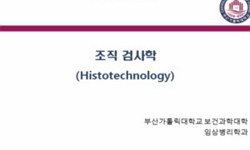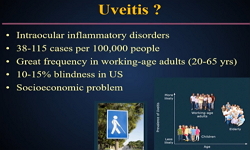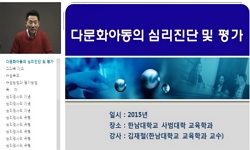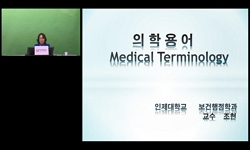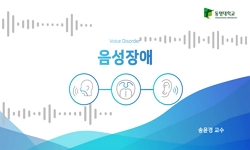Study Design: Optical cross-sectional study. Purpose: To study the correlation between asymmetry of the back (measured by means of surface topography) and deformity of the spine (quantified by the Cobb angle). Overview of Literature: The Cobb angle is...
http://chineseinput.net/에서 pinyin(병음)방식으로 중국어를 변환할 수 있습니다.
변환된 중국어를 복사하여 사용하시면 됩니다.
- 中文 을 입력하시려면 zhongwen을 입력하시고 space를누르시면됩니다.
- 北京 을 입력하시려면 beijing을 입력하시고 space를 누르시면 됩니다.


Correlation between Topographic Parameters Obtained by Back Surface Topography Based on Structured Light and Radiographic Variables in the Assessment of Back Morphology in Young Patients with Idiopathic Scoliosis
한글로보기https://www.riss.kr/link?id=A105945960
-
저자
Laura Pino-Almero (Clinic University Hospital) ; María Fe Mínguez-Rey (University of Valencia) ; Rosa María Cibrián-Ortiz de Anda (University of Valencia) ; María Rosario Salvador-Palmer (University of Valencia) ; Salvador Sentamans-Segarra (Clinic University Hospital)

- 발행기관
- 학술지명
- 권호사항
-
발행연도
2017
-
작성언어
English
- 주제어
-
등재정보
KCI등재,SCOPUS,ESCI
-
자료형태
학술저널
-
수록면
219-229(11쪽)
-
KCI 피인용횟수
0
- 제공처
-
0
상세조회 -
0
다운로드
부가정보
다국어 초록 (Multilingual Abstract)
Study Design: Optical cross-sectional study.
Purpose: To study the correlation between asymmetry of the back (measured by means of surface topography) and deformity of the spine (quantified by the Cobb angle).
Overview of Literature: The Cobb angle is considered the gold standard in diagnosis and follow-up of scoliosis but does not correctly characterize the three-dimensional deformity of scoliosis. Furthermore, the exposure to ionizing radiation may cause harmful effects particularly during the growth stage, including breast cancer and other tumors.
Methods: Patients aged 13.15±1.96 years (range, 7–17 years; n=88) with Cobb angle greater than 10° were evaluated with X-rays and our back surface topography method through three variables: axial plane (DHOPI), coronal plane (POTSI), and profile plane (PC).
Pearson’s correlation was applied to determine the correlation between topographic and radiographic variables. One-way analysis of variance and Bonferroni correction were used to compare groups with different grades of scoliosis. Significance was set at p <0.01 and, in some cases, at p <0.05.
Results: We detected a positive, statistically significant correlation between Cobb angle with DHOPI (r =0.810) and POTSI (r =0.629) and between PC variables with thoracic kyphosis angle (r =0.453) and lordosis lumbar angle (r =0.275). In addition, we found statistically significant differences for DHOPI and POTSI variables according to the grade of scoliosis.
Conclusions: Although the back surface topography method cannot substitute for radiographs in the diagnosis of scoliosis, correlations between radiographic and topographic parameters suggest that it offers additional quantitative data that may complement radiologic study.
참고문헌 (Reference)
1 Fortin C, "Validity of a quantitative clinical measurement tool of trunk posture in idiopathic scoliosis" 35 : E988-E994, 2010
2 Glinkowski W, "The time effectiveness of three-dimensional telediagnostic postural screening of back curvatures and scoliosis" 20 : 11-17, 2014
3 Sahlstrand T, "The clinical value of Moire topography in the management of scoliosis" 11 : 409-417, 1986
4 Faria R, "The EOS 2D/3D X-ray imaging system: a cost-effectiveness analysis quantifying the health benefits from reduced radiation exposure" 82 : e342-e349, 2013
5 Stokes IA, "Spinal deformity and back surface asymmetry in idiopathic scoliosis" 6 : 129-137, 1988
6 Pruijs JE, "School screening for scoliosis: the value of quantitative measurement" 4 : 226-230, 1995
7 Drerup B, "Rasterstereographic measurement of scoliotic deformity" 9 : 22-, 2014
8 Minguez MF, "Quantifier variables of the back surface deformity obtained with a noninvasive structured light method: evaluation of their usefulness in idiopathic scoliosis diagnosis" 16 : 73-82, 2007
9 Cobb J, "Outline for the study of scoliosis" 5 : 261-275, 1948
10 Willner S, "Moire topography for the diagnosis and documentation of scoliosis" 50 : 295-302, 1979
1 Fortin C, "Validity of a quantitative clinical measurement tool of trunk posture in idiopathic scoliosis" 35 : E988-E994, 2010
2 Glinkowski W, "The time effectiveness of three-dimensional telediagnostic postural screening of back curvatures and scoliosis" 20 : 11-17, 2014
3 Sahlstrand T, "The clinical value of Moire topography in the management of scoliosis" 11 : 409-417, 1986
4 Faria R, "The EOS 2D/3D X-ray imaging system: a cost-effectiveness analysis quantifying the health benefits from reduced radiation exposure" 82 : e342-e349, 2013
5 Stokes IA, "Spinal deformity and back surface asymmetry in idiopathic scoliosis" 6 : 129-137, 1988
6 Pruijs JE, "School screening for scoliosis: the value of quantitative measurement" 4 : 226-230, 1995
7 Drerup B, "Rasterstereographic measurement of scoliotic deformity" 9 : 22-, 2014
8 Minguez MF, "Quantifier variables of the back surface deformity obtained with a noninvasive structured light method: evaluation of their usefulness in idiopathic scoliosis diagnosis" 16 : 73-82, 2007
9 Cobb J, "Outline for the study of scoliosis" 5 : 261-275, 1948
10 Willner S, "Moire topography for the diagnosis and documentation of scoliosis" 50 : 295-302, 1979
11 Takasaki H, "Moire topography" 12 : 845-850, 1973
12 Lonstein JE, "Moe’s textbook of scoliosis and other spinal deformities" W.B. Saunders Company 45-86, 1978
13 Kotwicki T, "Methodology of evaluation of morphology of the spine and the trunk in idiopathic scoliosis and other spinal deformities: 6th SOSORT consensus paper" 4 : 26-, 2009
14 Dang NR, "Intra-observer reproducibility and interobserver reliability of the radiographic parameters in the Spinal Deformity Study Group’s AIS Radiographic Measurement Manual" 30 : 1064-1069, 2005
15 Guidetti L, "Intra- and interday reliability of spine rasterstereography" 2013 : 745480-, 2013
16 Knott P, "Electromagnetic topographical technique of curve evaluation for adolescent idiopathic scoliosis" 31 : E911-E915, 2006
17 Melhem E, "EOS((R)) biplanar X-ray imaging: concept, developments, benefits, and limitations" 10 : 1-14, 2016
18 Shannon TM, "Development of an apparatus to evaluate adolescent idiopathic scoliosis by dynamic surface topography" 140 : 121-127, 2008
19 Frerich JM, "Comparison of radiographic and surface topography measurements in adolescents with idiopathic scoliosis" 6 : 261-265, 2012
20 Pino L, "Clinical application of surface topography back based on structured light in screening, diagnosis and monitoring of spinal deformities" University of Valencia 2014
21 Doody MM, "Breast cancer mortality after diagnostic radiography: findings from the U.S. Scoliosis Cohort Study" 25 : 2052-2063, 2000
22 Oxborrow NJ, "Assessing the child with scoliosis: the role of surface topography" 83 : 453-455, 2000
23 Suzuki N, "Analysis of posterior trunk symmetry index (POTSI) in scoliosis. Part 1" 59 : 81-84, 1999
24 Turner-Smith AR, "A television/computer threedimensional surface shape measurement system" 21 : 515-529, 1988
25 Berryman F, "A new system for measuring three-dimensional back shape in scoliosis" 17 : 663-672, 2008
동일학술지(권/호) 다른 논문
-
Atlantoaxial Stabilization Using C1 and C2 Laminar Screw Fixation
- 대한척추외과학회
- Takashi Tsuji
- 2017
- KCI등재,SCOPUS,ESCI
-
Genetic Markers for Adolescent Idiopathic Scoliosis on Chromosome 19p13.3 among Saudi Arabian Girls
- 대한척추외과학회
- Abdallah Ahmad Al-Othman
- 2017
- KCI등재,SCOPUS,ESCI
-
- 대한척추외과학회
- Sudhir Kumar Srivastava
- 2017
- KCI등재,SCOPUS,ESCI
-
- 대한척추외과학회
- Rattalerk Arunakul
- 2017
- KCI등재,SCOPUS,ESCI
분석정보
인용정보 인용지수 설명보기
학술지 이력
| 연월일 | 이력구분 | 이력상세 | 등재구분 |
|---|---|---|---|
| 2024 | 평가예정 | 해외DB학술지평가 신청대상 (해외등재 학술지 평가) | |
| 2021-01-01 | 평가 | 등재학술지 선정 (해외등재 학술지 평가) |  |
| 2020-12-01 | 평가 | 등재 탈락 (해외등재 학술지 평가) | |
| 2013-10-01 | 평가 | 등재학술지 선정 (기타) |  |
| 2011-01-01 | 평가 | SCOPUS 등재 (신규평가) |  |
학술지 인용정보
| 기준연도 | WOS-KCI 통합IF(2년) | KCIF(2년) | KCIF(3년) |
|---|---|---|---|
| 2016 | 0 | 0 | 0 |
| KCIF(4년) | KCIF(5년) | 중심성지수(3년) | 즉시성지수 |
| 0 | 0 | 0 | 0 |




 KCI
KCI